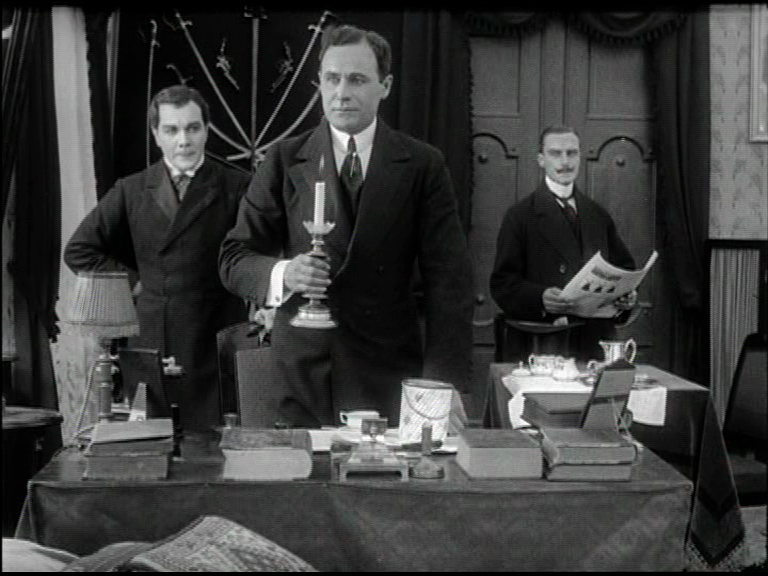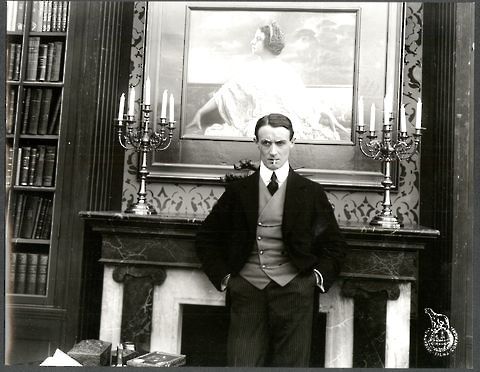Quo vadis?
R: Enrico Guazzoni. B: Henryk Sienkiewicz (novel). K: Alessandro Bona. D: Amleto Novelli, Lea Giunchi, Gustavo Serena. P: Cines. It 1912/13
Print: Cineteca Italiana
Engl. titles
“Quo Vadis? is a 1912 film directed by Enrico Guazzoni, based on the 1896 novel of the same name. It was the first blockbuster in the history of cinema, with 5,000 extras, lavish sets, and a running time of two hours, setting the standard for ‘superspectacles’ for decades to come.
A worldwide success, it was the first film to be projected in a first-class Broadway theater, where it was screened for nine months from April to December 1913. The film’s first screening in London was for King George V, who complimented the performers. Two years later, in 1914, another Italian director, Giovanni Pastrone, will direct Cabiria, which is similar to Quo Vadis, but even longer, more complex, and more spectacular.
The story is set during the early years of rule by the emperor Nero. He is an ambitious man obsessed with gaining absolute power. His soldier falls in love with a young Christian slave named Lycia, but their love is hindered by Nero, who hates Christianity and unleashes his officers to burn Rome, pinning the blame on the Christians. In addition, the cruel Nero kidnaps the pair and sends them into an arena to fight lions.”
Wikipedia
La sposa del Nilo
R: Enrico Guazzoni. D: Bruto Castellani, Ettore Mazzanti, Gastone Monaldi, Fernanda Negri Pouget. P: Società Italiana Cines. It 1911
Dutch titles
“The film appears to depict a famous painting by Federico Faruffini, ‘The Virgin of the Nile’ which hangs to this day in the Galleria D’Arte Moderna in Rome. In the painting we see the girl floating on the surface of the river like Millais’ ‘Ophelia’, framed by flowers (a favorite nineteenth-century topos), with the priests and people standing on the bank of the Nile in the distance. In the film, this has been split into two scenes, consisting first of an establishing shot, showing the girl being thrown into the water, then a second scene showing the girl floating on the water, but without the background of onlookers. Guazzoni might very weIl have seen and used this painting, as a sort of Living Picture not unlike the practice in Pathé’s Le Duel or the British Biograph Living Pictures, of staging the whole film in order to show what happened before the final tableau. The use of pictorial references in Quo vadis? was therefore nothing new in Guazzoni’s career.”
Ivo Blom: Quo vadis? From Painting to Cinema and Everything in Between. In: Leonardo Quaresima, Laura Vichi (eds.): La decima musa. Il cinema e le altre arti/ The Tenth Muse. Cinema and other arts. Udine: Forum, 2001, p. 286
Federico Faruffini: Il sacrificio della Vergine al Nilo, 1865

La caduta di Troia
R: Giovanni Pastrone, Lucio Romano. K: Giovanni Tomatis. D: Signora Davesnes, Giulio Vina, Giovanni Casaleggio. P: Itala. It 1911
Print: Museo Nazionale del Cinema Torino
Ital. intertitles
Nerone o la caduta di Roma
R: Luigi Maggi. B: Decoroso Bonifanti, Arrigo Frusta. K: Giovanni Vitrotti. D: Alberto Capozzi, Lydia De Roberti, Luigi Maggi. P: Società Anonima Ambrosio. It 1909
“In der Filmgeschichtsschreibung einigermaßen gesichert erscheint (…) der Beitrag der italienischen Filme zur Ästhetik der Kinematographie. Diese Filme sind schon auf den ersten Blick ‘monumental’: wegen ihrer Länge und der großen Menge von Schauspielern und Komparsen, die im Bild erscheinen – und die natürlich auch in Bewegung gesetzt werden. Die Filme sind also neu wegen der Quantität und Qualität ihrer bewegten Bilder, ihrer mise-en-spectacle. So viele Personen und Geschichten in Szene zu setzen erfordert Raum. Da genügen nicht mehr einige gemalte Kulissen in kleinen Studios, da werden stabile Bauten in großen Räumen benötigt, zum Beispiel in natürlichen Landschaften. Wofür wiederum eine neue Konzeption der ‘Einstellung’ und der Tiefe nötig ist. Es ist die Stunde der systematischen Handhabung der Bildtiefe und Tiefenschärfe – auch im weiteren Sinn: die Eröffnung einer komplexeren Erzählstruktur zwischen Vordergrund und Hintergrund. Dies gilt für die ersten Filme, wenn die Kamera noch nach dem Kanon der zentralperspektivischen Ausrichtung des Zuschauerblicks fest verankert ist, und natürlich noch weitaus mehr, wenn sie in Bewegung gesetzt wird, zum Beispiel im ‘Cabiria movement’ (Barry Salt).”
Irmbert Schenk: Von Cabiria zu Mussolini- In: I.S.: Kino und Modernisierung. Von der Avantgarde zum Videoclip. Marburg 2008, S. 47 f.
TRAUM UND EXZESS, S. 310 ff.




 Den mystiske Fremmede (A Deal with the Devil) Frgm.
Den mystiske Fremmede (A Deal with the Devil) Frgm.




